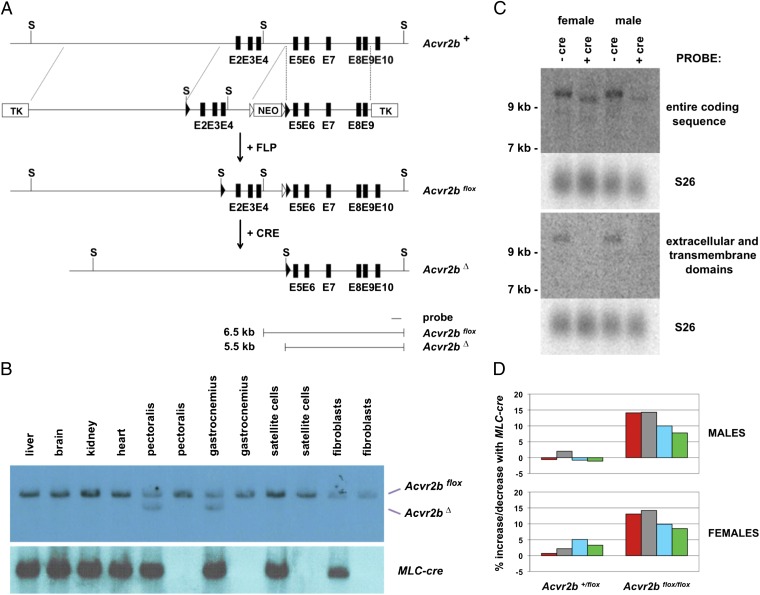Fig. 4.
Effect of targeting Acvr2b in myofibers. (A) Gene targeting strategy. Locations of exons 2–10 (E2–E10) are shown as black boxes, FRT (Flippase recognition target) sites are denoted by open triangles, and LoxP sites are denoted by filled triangles. The neo cassette was removed by crossing mice carrying the targeted allele with transgenic mice expressing FLP (Flippase) recombinase in the germline, resulting in an Acvr2bflox allele. Recombination between the LoxP sites results in a deletion allele (Acvr2bΔ) lacking exons 2–4. Southern blot analysis of genomic DNA digested with ScaI (S) and hybridized using the probe indicated is predicted to give 6.5-kb and 5.5-kb fragments for the Acvr2bflox and Acvr2bΔ alleles, respectively. (B) Southern blot analysis of genomic DNA isolated from various tissues or cell preparations (as indicated) using either the probe shown in A or a probe for the MLC-cre transgene. (C) Northern blot analysis of total RNA (25 μg) isolated from the gastrocnemius muscle using probes corresponding either to the entire coding sequence or to the extracellular and transmembrane domains of ACVR2B. Blots were reprobed with S26 (ribosomal protein) as a loading control. (D) Percentage increase or decrease in weights of the pectoralis (red), triceps (gray), quadriceps (blue), and gastrocnemius/plantaris (green) muscles of Acvr2b+/flox or Acvr2bflox/flox mice resulting from the presence of the MLC-cre transgene. Actual weights, SEs, and P values are shown in Table 5.

